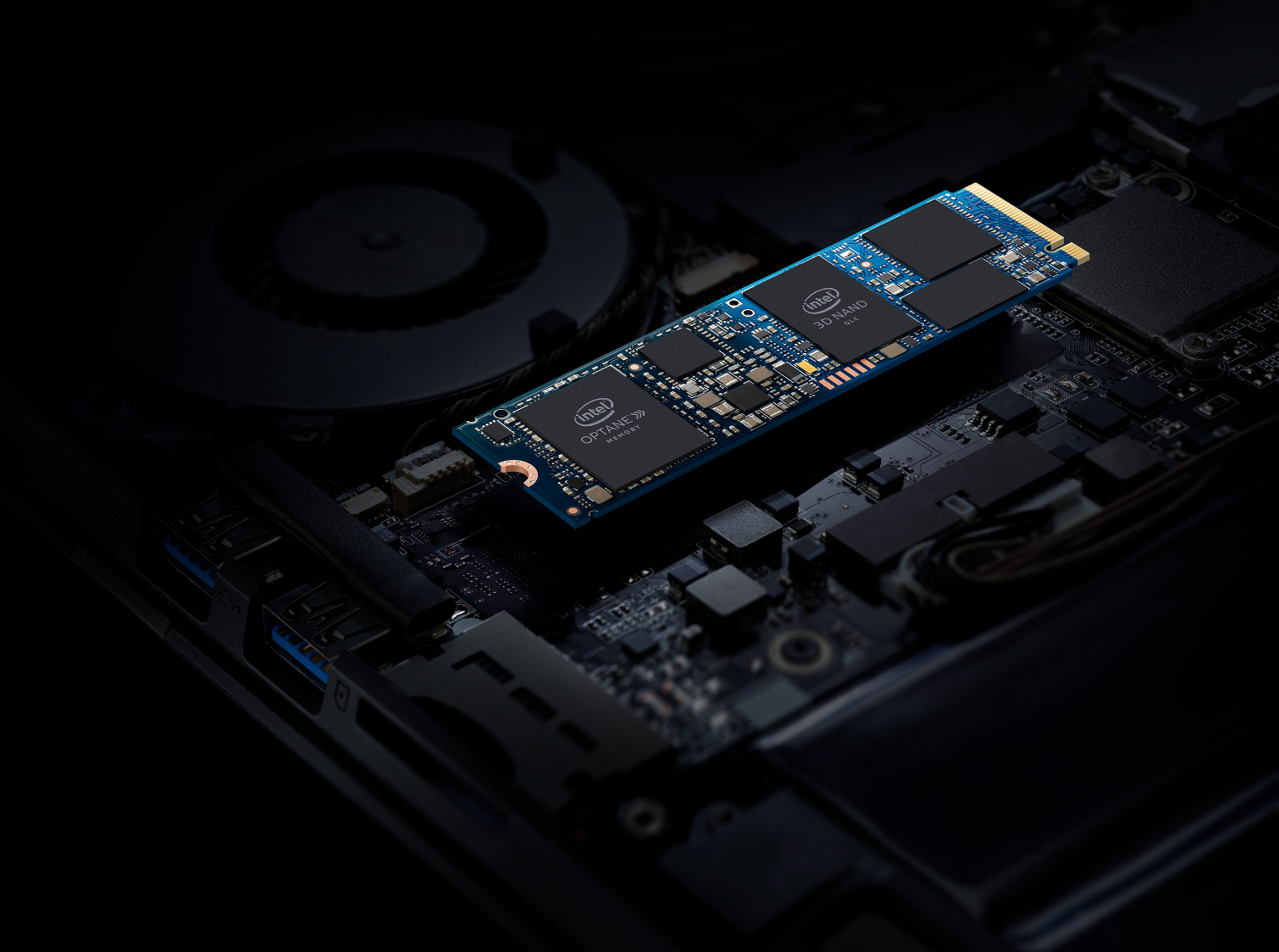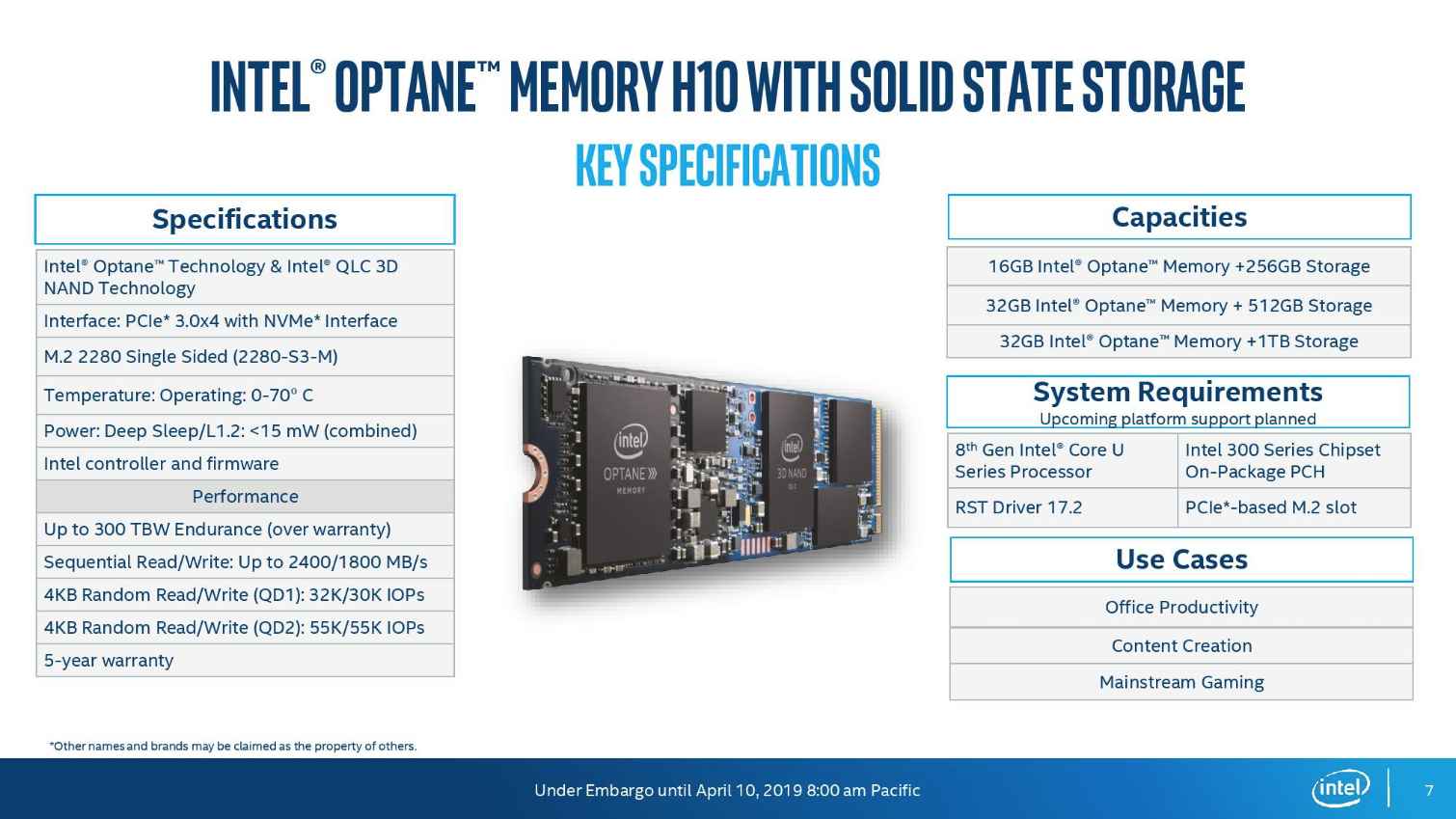Intel Optane Memory H10 SSDs Coming to OEM Laptops Soon, Desktops Later
Intel announced today that its new Optane Memory H10 SSDs are coming to OEM laptops beginning in the second quarter of 2019, with support for the do-it-yourself market coming in the future. The company also released the first full specifications of the drives. These new SSDs marry Optane memory with QLC flash on a single M.2 stick to fuse the speed of Optane with the capacity and low pricing of QLC flash.
Intel's Optane Memory, which is based upon the fast 3D XPoint memory, provides the ultimate in storage performance, but high pricing has long hindered its broader adoption. Intel's Optane SSD 800p is currently the most capacious Optane M.2 drive, but it tops out at a mere 118GB. That's too small for most users searching for an all-in-one solution.

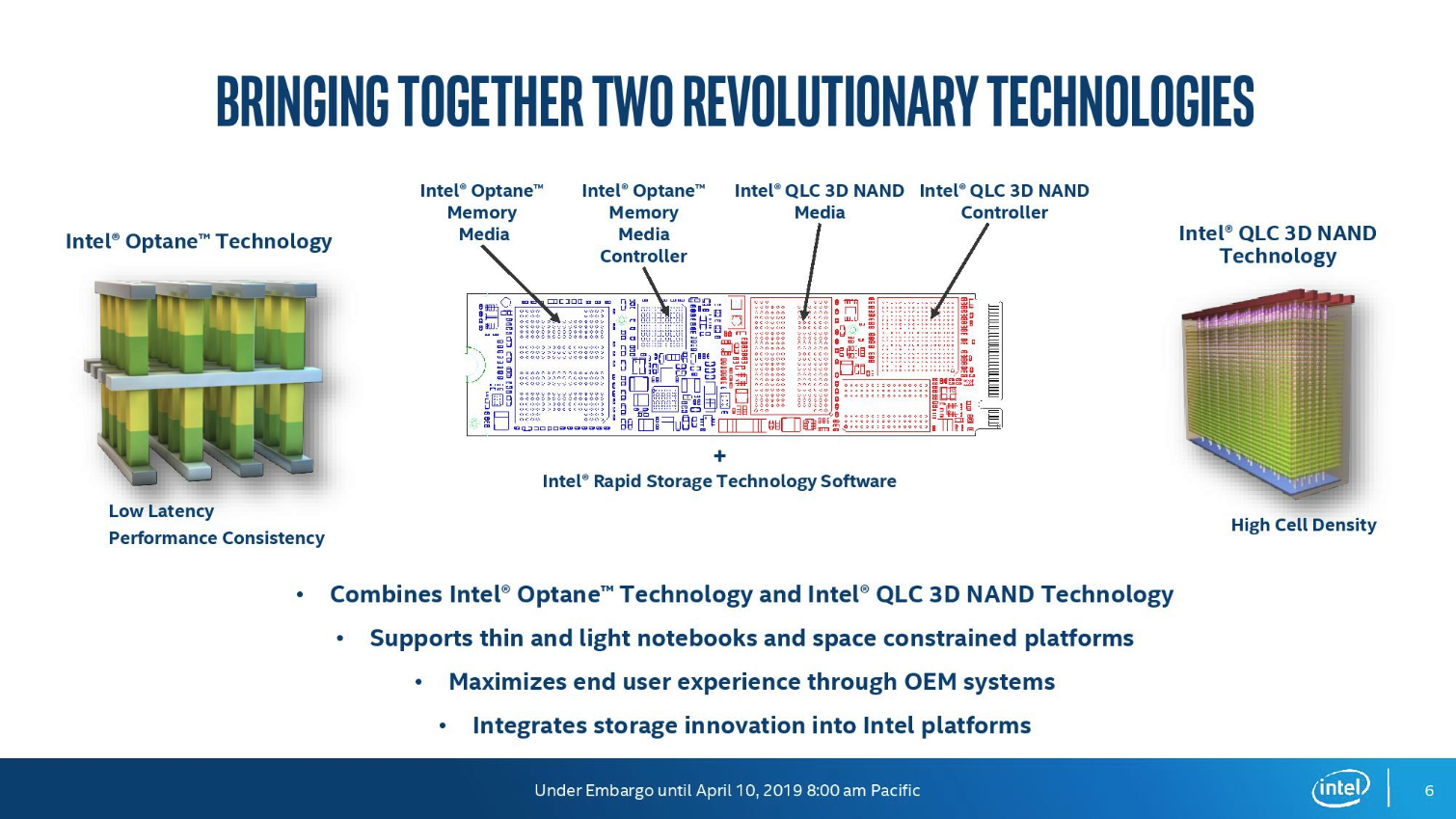
In a bid to improve pricing and capacity, Intel created the new M.2 H10 SSDs in three variants. As we can see above, the SSD has two different packages for data storage (Optane to the far right and QLC in the center), along with two SSD controllers (one for each type of storage).
| Optane Memory H10 Models (Usable Capacity) | Optane Memory | QLC Flash |
| 256GB | 16GB | 256GB |
| 512GB | 32GB | 512GB |
| 1TB | 32GB | 1TB |
The H10 drives present themselves to the operating system as two separate PCIe 3.0 x2 SSDs, and they only work with motherboards that support PCIe bifurcation. The two drives are then combined using Intel's Rapid Storage Technology (RST) software that stores frequently-accessed data on the faster Optane Memory, thus boosting performance in everyday tasks. The software places less-used data on the slower QLC flash, which provides additional capacity. Because this cache is transparent to the user, the drives expose 256GB, 512GB, or 1TB of usable storage to the user even though they actually have more storage capacity onboard.
Intel recently enabled Optane support for the H10 SSDs and Optane Memory caching, including for the cheap Pentium and Celeron chips, via a new memory user interface and driver update. Support for these lower-end chips does come with a few caveats, though, as you'll need an 8th-gen (or higher) processor and RST driver 17.2, or later. We covered the finer details in a recent article, so head there for more information.
The NVMe H10 drives come in a single-sided form factor, meaning all the components reside on one side of the PCB, which is a good fit for today's thin-and-light devices. The drives also support the L1.2 low power states, which allow the drive to sip only 15mW when they are idle. Intel also backs the drives with a five-year warranty.
Each of the two storage devices come with a PCIe 3.0 x2 connection but still offer up to 2,400/1,800 MB/s of sequential read/write throughput paired with up to 32,000/30,000 random read/write IOPS at a queue depth of 1. These metrics aren't as impressive as some of the specifications we see with leading SSDs that jump into the range of 400,000 IOPS, but that's because Intel measures performance where it matters - under light load conditions (QD1 and QD2), while SSD vendors tend to list performance with completely unrealistic loadings (QD265) that you would never see in a consumer-class application.
Get Tom's Hardware's best news and in-depth reviews, straight to your inbox.
The Optane H10 consists of two SSDs (an Intel 600p and 905p), each with its own PCIe 3.0 x2 link, but you might notice that the 2,400 MB/s of peak throughput is higher than the bandwidth of the PCIe 3.0 x2 link (~1,970 MB/s). That's because, under certain conditions, Intel's RST software can read and write from both SSDs simultaneously using a bandwidth aggregation technique.
While the H10 isn't geared for the ultimate in performance, that's still the purview of its pure-Optane drives, the company claims it boosts real-world performance in most tasks we expect with laptops, like normal light operating system usage and office productivity, content creation, and mainstream gaming. These drives aren't well-suited for heavier users, like professionals that transcode video, but they do carry a sufficient 300TBW endurance rating for normal desktop PC use, meaning you can write 300TB to the drive over its warranty period.
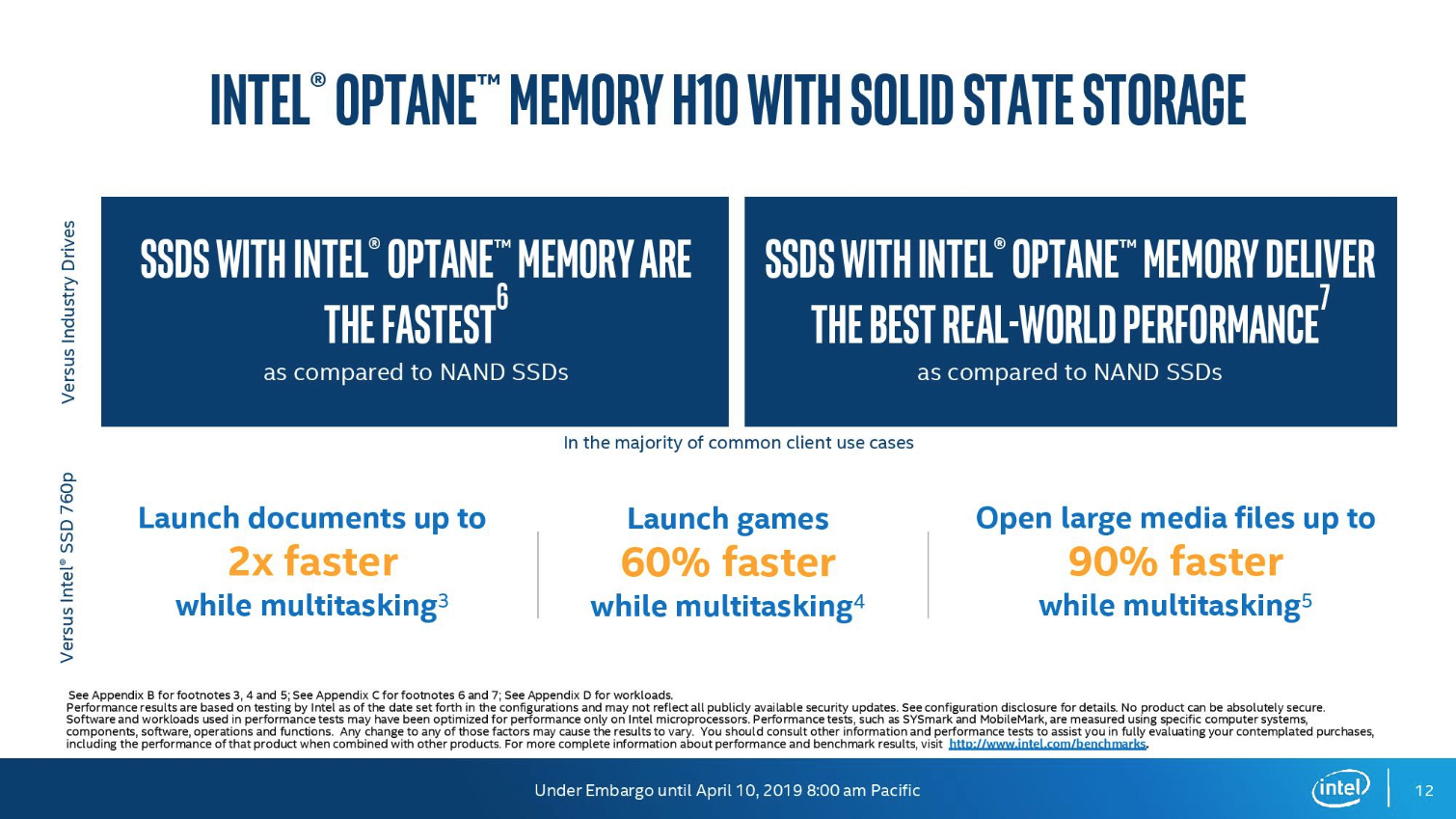
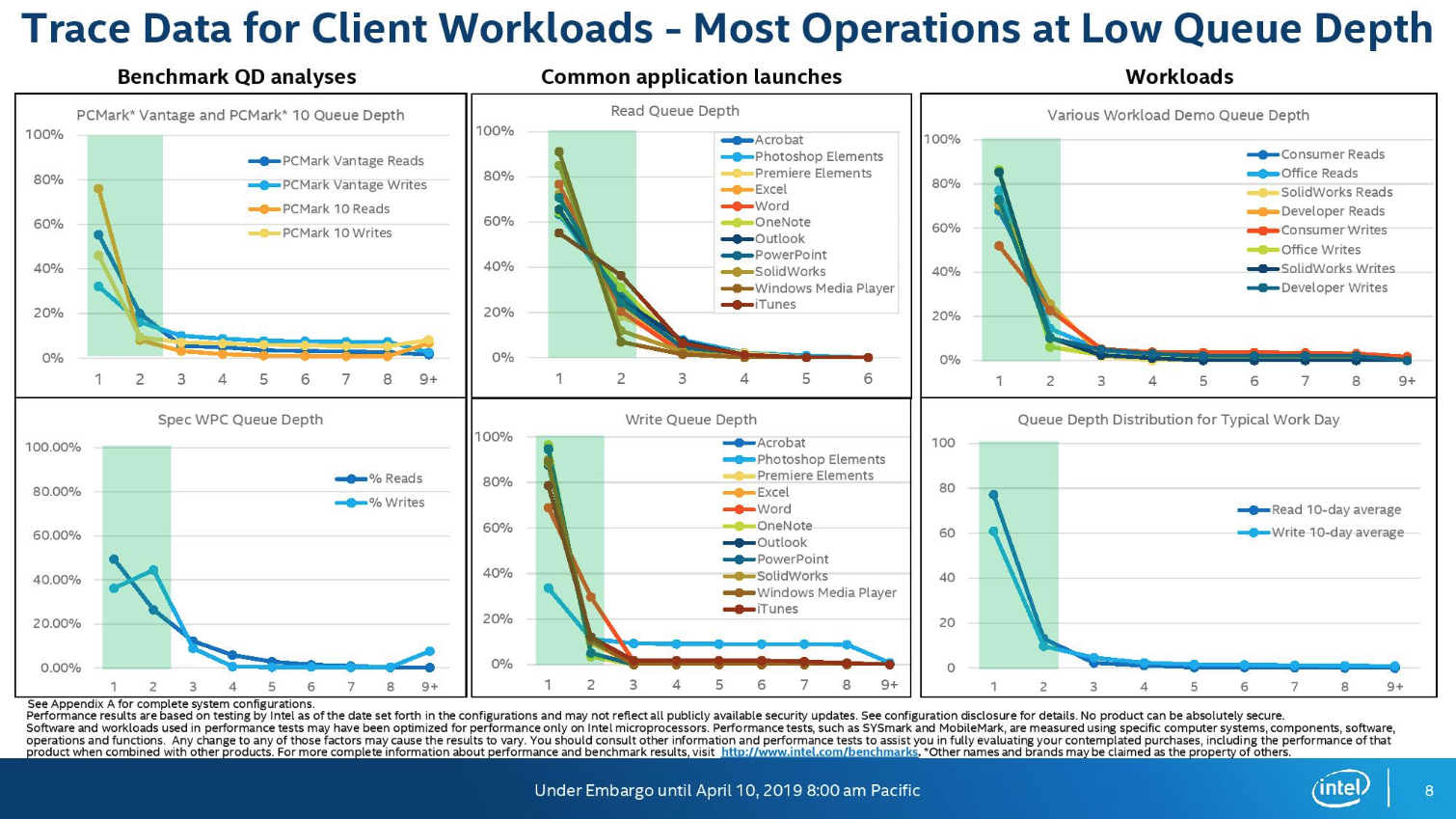

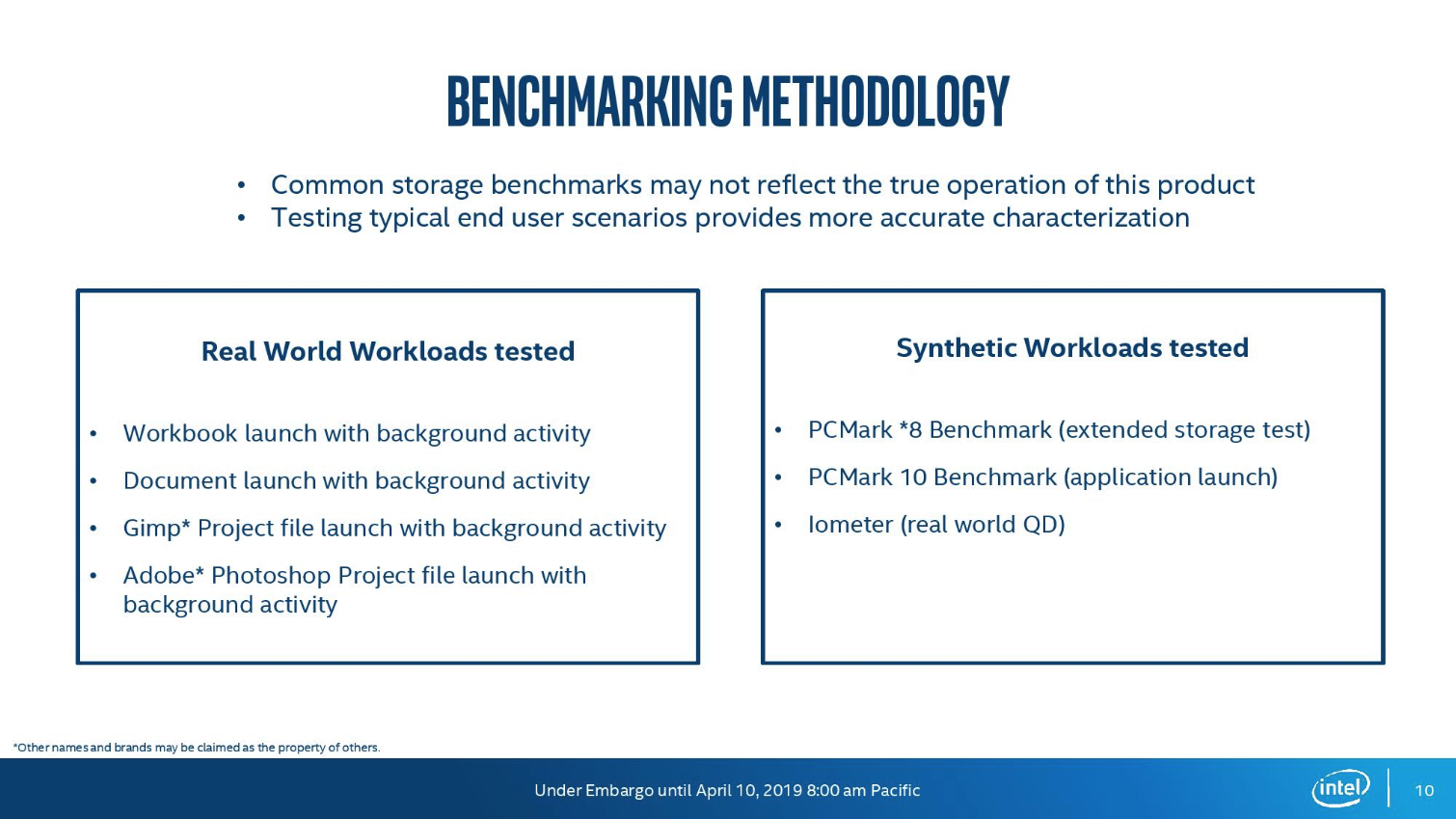
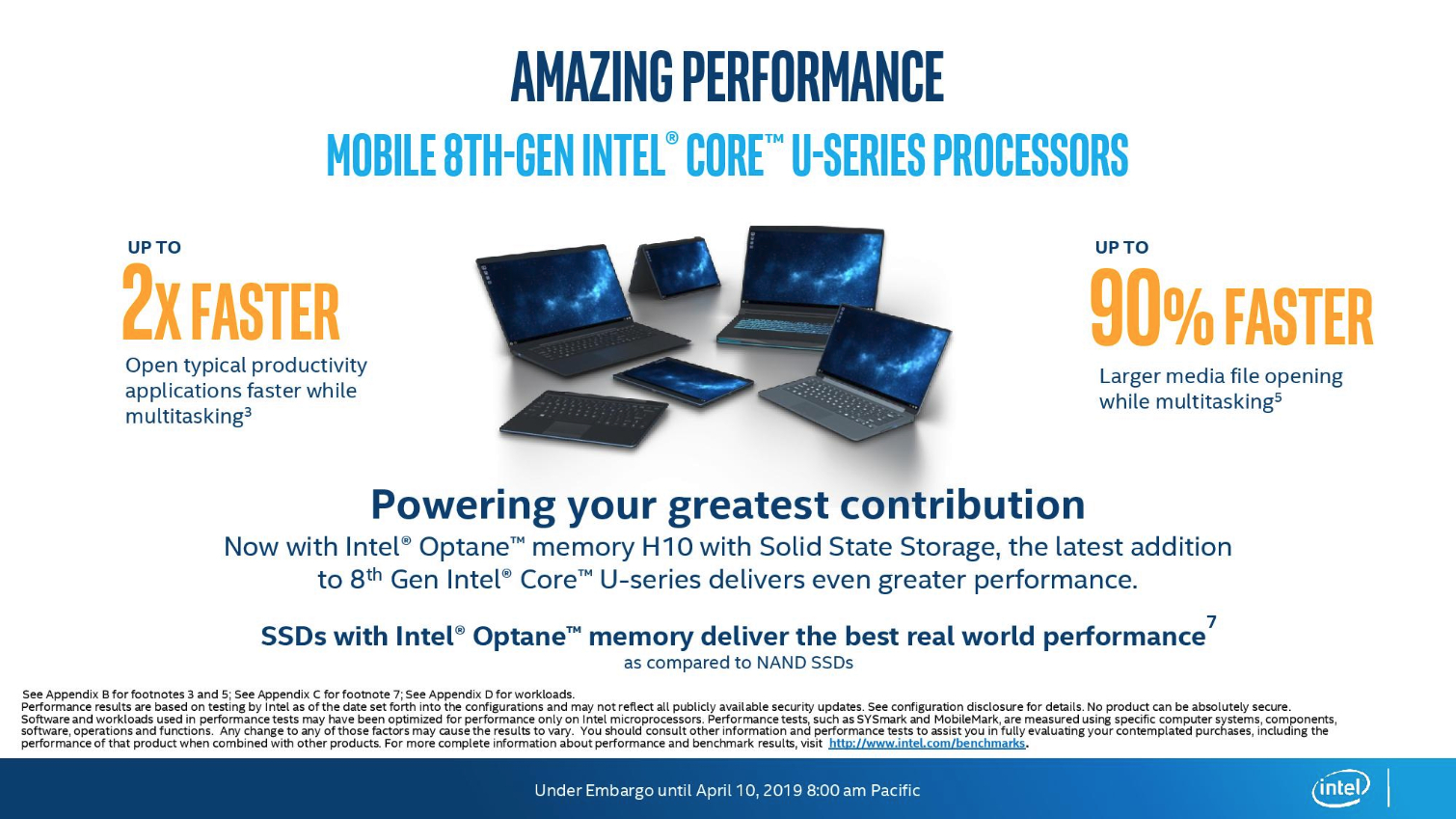
The key here is to accelerate the real-world multi-tasking workloads that tend to be rather light in nature, which is a natural fit for Intel's speedy Optane memory. Intel claims the drives will launch documents up to two times faster, boost game launches by 60%, and open large multimedia files up to 90% faster during multi-tasking. We'll be testing these drives soon to verify those performance claims.
Intel isn't selling the drives separately yet, so we weren't provided with pricing specifics, though the company does plan to add support for certain motherboards in the future. For now, the drives will find their way into laptops from a range of Best Buy OEMs, including Dell, HPI, ASUS, with other OEMs and retailers coming soon. Intel will also bring support for the drives to its NUC lineup soon. We can expect to see laptops with the new drives arrive in the second quarter of 2019.
Image Credits: Intel

Paul Alcorn is the Editor-in-Chief for Tom's Hardware US. He also writes news and reviews on CPUs, storage, and enterprise hardware.
